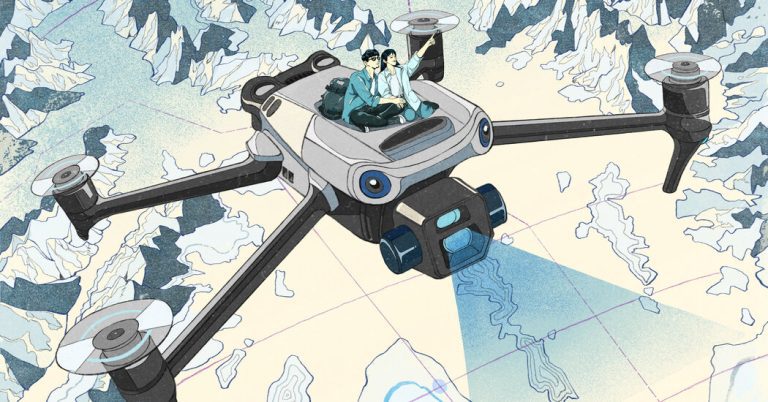Before the advent of drones, people had to rely mostly on airplanes or helicopters to take aerial photos. Now, thanks to the increasing availability and decreasing prices of drones, as well as advances in obstacle avoidance technology, GPS navigation, battery life, and camera stabilization, it sure seems easier to take photos from higher altitudes.
But that doesn’t mean that anyone with a drone can take great photos. Here are some practical tips on the logistics of using a drone and suggestions for taking better photos while traveling.
First, know the rules
In the United States, the Federal Aviation Administration oversees drone regulations, and FAADroneZone is the country’s official website for understanding drone requirements and managing drone services. If you are a recreational pilot, you must pass an aeronautical knowledge and safety test, called the Recreational UAS Safety Test, before flying your drone.
Drone company DJI also has a detailed website that guides drone users on local rules and regulations.
The basic rules for flying a drone as a hobbyist — that is, with recreational drone use — are to only fly the drone at 400 feet or below, always keep the drone in line of sight, don’t fly in restricted airspace, and don’t you fly over groups of people. If you fly your drone commercially, you must become a certified remote operator by passing the FAA’s Part 107 test. This is a more extensive test and covers additional drone rules, airspace regulations and weather conditions.
Please note that many countries may have different regulations. Wherever you go, you can be fined or have your aircraft impounded if you don’t follow the rules.
Understand what your drone can do
Drones are incredibly fast, agile and accurate. You can fly up to 400 feet and move laterally in infinite directions to get the perfect shot. But first-time drone fliers often fly as high as possible and take photos that lack focus or strong composition.
To get photos with the most detail, set your drone to the lowest ISO, usually 100. This is the feature that adjusts the camera’s sensitivity to light and was known as film speed in the film era. To achieve the best image quality, it’s best to shoot in RAW format, which is an unprocessed digital image file that contains the most data. When processed, this will produce photos with the greatest detail.
After purchasing your drone, it is a good practice to regularly update the firmware, which is software that provides basic instructions for the successful operation of the onboard hardware, such as the drone and the remote control that work together.
Use the maps and weather forecast and time it right
Whether you’re consulting an atlas or following your car’s or phone’s navigation, maps are very effective tools for seeing the shape of a river, lake or lake and provide ideas for good aerial subjects.
Once you’ve found a location, shoot during the “golden hours” — taking photos around sunrise and sunset will often produce the most dramatic photos with warm light and shadows. It is a good idea to keep an eye on the weather forecast to know the sunrise and sunset times and also what the weather will be like. Strong winds and rainy or snowy weather make flying a drone much more difficult.
Look for patterns, lines and light while flying
Many times a drone photographer will make discoveries from the air. You might start with the idea of photographing one thing, and while you’re in the air, you might discover something more exciting. Rivers, solar arrays, farms and trees can provide attractive patterns and lines.
And don’t forget light and shadows either. Good light can make or break a photo. Sometimes the best light means a golden sunrise, as we said earlier, but sometimes it means an overcast day with diffused light. On cloudy days, shooting straight on a subject can be very effective.
Taking drone photos at twilight can also be very exciting. This is the time after sunset and before nightfall. Set the drone to manual exposure, set the ISO to 100 and experiment with long exposures. Some drones can take up to eight seconds of exposure and maintain sharp focus.
Study the work of an expert
One of the great ways to make your photos better is to study the work of a professional photographer.
Photographer George Steinmetz has been taking aerial photos for decades—even before the rise of affordable drones—while working with publications like National Geographic and the New York Times. He has published five books on aerial photography.
“For intimate aerial photography, a drone is great,” he said, but added that any type of aerial photography can be transformative.
“You see the world in a way you’re not used to,” he said. “It adds context and a new perspective.”




